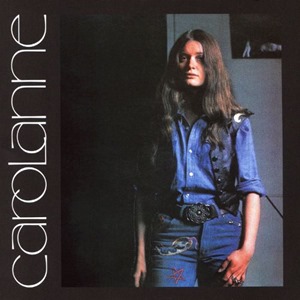Bezbroj puta mi se dešavalo da mi je značenje pojedinih pesama neprestano izmicalo jer nisam mogao da ih stavim u neki smisleni kontekst. A ako su bile povezane sa nekim toponimima ili istorijskim događajima, još je bilo teže – prevrtanje listova po knjigama u biblioteci nije bilo vredno uloženog truda jer bih, obično, ostajao kratkih rukava. Srećom, ulaskom u digitalno doba, postalo je malo lakše, mada ni tražilica nije svemoguća.
Izgleda mi da ću se do kraja života baviti odgonetanjem zagonetki. ![]()
Na pesmu “The Lady and the Well” sam nabasao na nekoj od kompilacija koja se bavi britanskim folk rockom s kraja šezdesetih i početka sedamdesetih. Bilo je to zaista interesantno vreme i na njega sam se već osvrtao u nekim tekstovima. Neki od tadašnjih aktera na toj sceni postigli su zavidne karijere (Pentangle, Fairport Convention, Steeleye Span) i postale rasadnik velikih i raskošnih talenata (Sandy Denny, Richard Thompson…).
Poneki, poput grupe Mr. Fox, nisu uspeli da privuku veću pažnju i potonuli su u senku opskurnosti.
Jezgro septeta Mr. Fox bili su u to vreme bračni par Bob i Carolanne Pegg (negde je potpisana i kao Carol), koji su pokušavali da budu inovativni u svom pristupu muzici. Poređenje sa uspešnijim takmacima je sasvim umesno, ali su se razlikovali u par detalja – nisu hteli da se elektrificiraju i pisali su sopstvene pesme u duhu tradicije. Za sobom su ostavili dva albuma koje publika koja voli ovakvu vrstu muzike visoko ceni, a prestali sa radom u trenutku kada se završila bračna zajednica Peggovih.
 Carolanne je posle toga snimila interesantan solo album koji je više songwriterski nego folk, a zatim se bacila na akademsku karijeru. Stekla je doktorat iz etnomuzikologije i radi kao istraživač na univerzitetu u Kembridžu.
Carolanne je posle toga snimila interesantan solo album koji je više songwriterski nego folk, a zatim se bacila na akademsku karijeru. Stekla je doktorat iz etnomuzikologije i radi kao istraživač na univerzitetu u Kembridžu.
Kako sama kaže, inspiraciju za ovu pesmu je dobila dok je gledala izlazak sunca sa Glastonbury Tora. U njegovom podnožju se nalazi Chalice Well, pa ako znamo za priče i predanja karakteristične za podneblje Somerseta u kojima se prepliću keltska tradicija, fantastika i događaji iz bogate lokalne istorije, biće sve malo jasnije.
The lady she sits on the side of the hill,
Watching the mist rise o’er the rhines from the sea,
Surrounded by silence, she made for the tower,
To the gods of old, she made her plea:
‘Oh, bring me a lad with hair like the sun,
And face as fair as an apple on a tree,
Oh, bring me a lord, with rings on his fingers,
In a year and a day, I will give him to thee.The mist it did rise ‘til it swirled at her feet,
And she seemed on an island in the middle of the sea,
Above her the sky, endlessly reaching,
Beneath her no sign of the land could she see.
Then a silvery shaft shattered the gloom,
Filling a niche in the side of the well,
Showing a sluice that held back the water,
Trembling, she heard the sound of a bell.Slowly, slowly, the mist it did clear,
‘Til in the distance a lad she spied,
Velvet his eyes and hair like the sun,
Three ladies in white were at his side,
The lad appeared to be in a dream,
As smiling he told her of her charms,
The days slid by as they laughed in the heather,
With teazles in her hair, she tumbled in his arms.She told of the thorn that would blossom in winter,
They laughed in the ferns and the leaves as they fell,
But sometimes at night along the road from the marshes,
The black mounds of peat seemed like an army from hell.
She watched with alarm the approaching midsummer,
Laughed at her fears as the mist it did rise,
Searched in vain for her love that was missing,
Saw the silver beam come from the skies.Running and tripping she came to the well side,
The night was black as any crow,
The sluice was pulled, the well it was full,
The three white ladies sat in a row.
With trembling fingers she tore at the water,
Tried to hold back the icy flow,
Then watching she saw her fair face did wrinkle,
And her hair turn the colour of muddy snow.The lady she sits on the side of the hill,
She stares at the sun, counts the stars in her pain,
She waits for the mist to rise over the rhines,
She waits for the bell to sound, once again.
U keltskoj mitologiji bunar se često pominje kao kapija za duhovni svet, a ovaj iz pesme se od pamtiveka koristio za prinošenje žrtava bogovima.
Eto, svašta danas zajedno naučismo. ![]()

